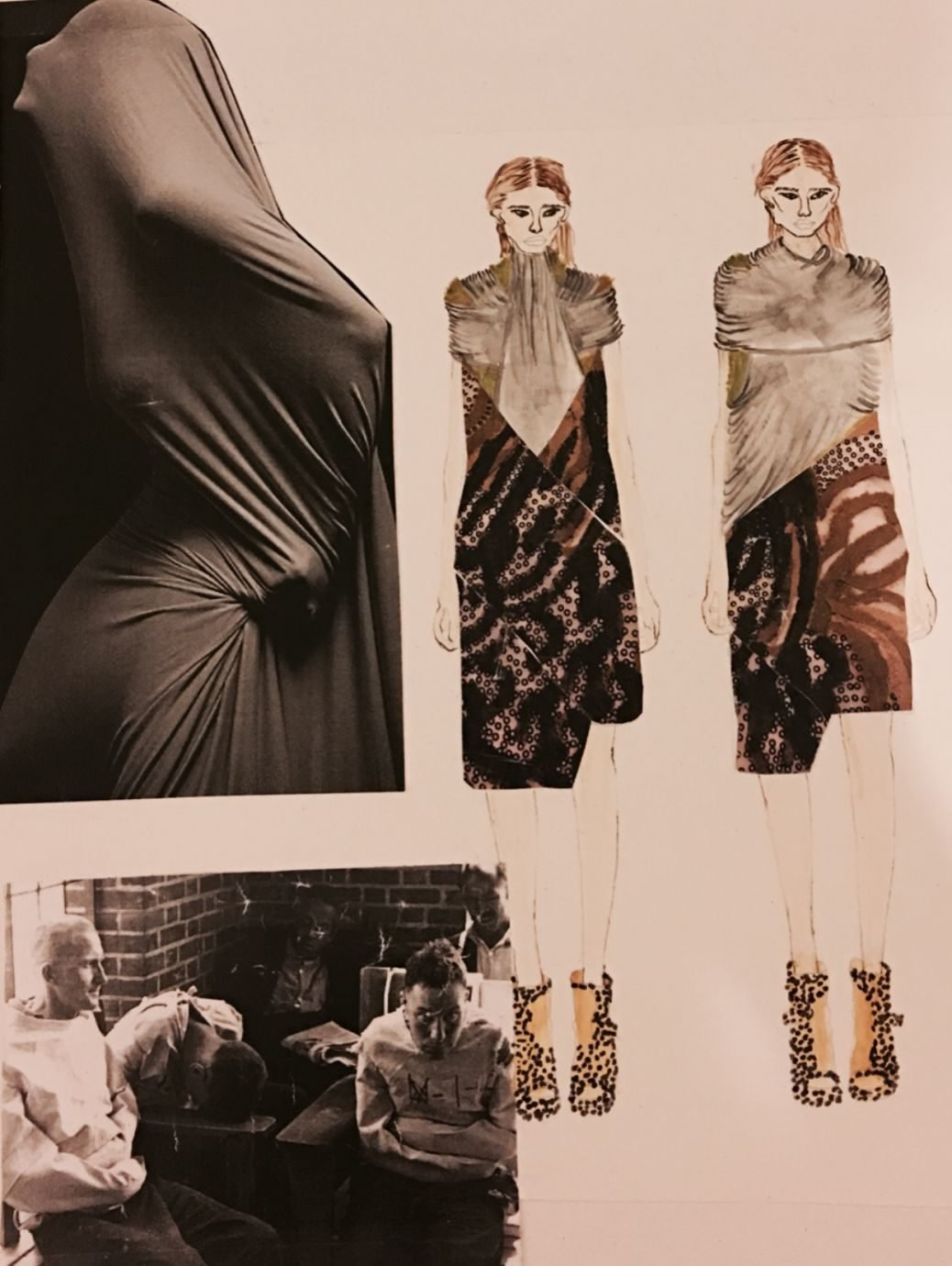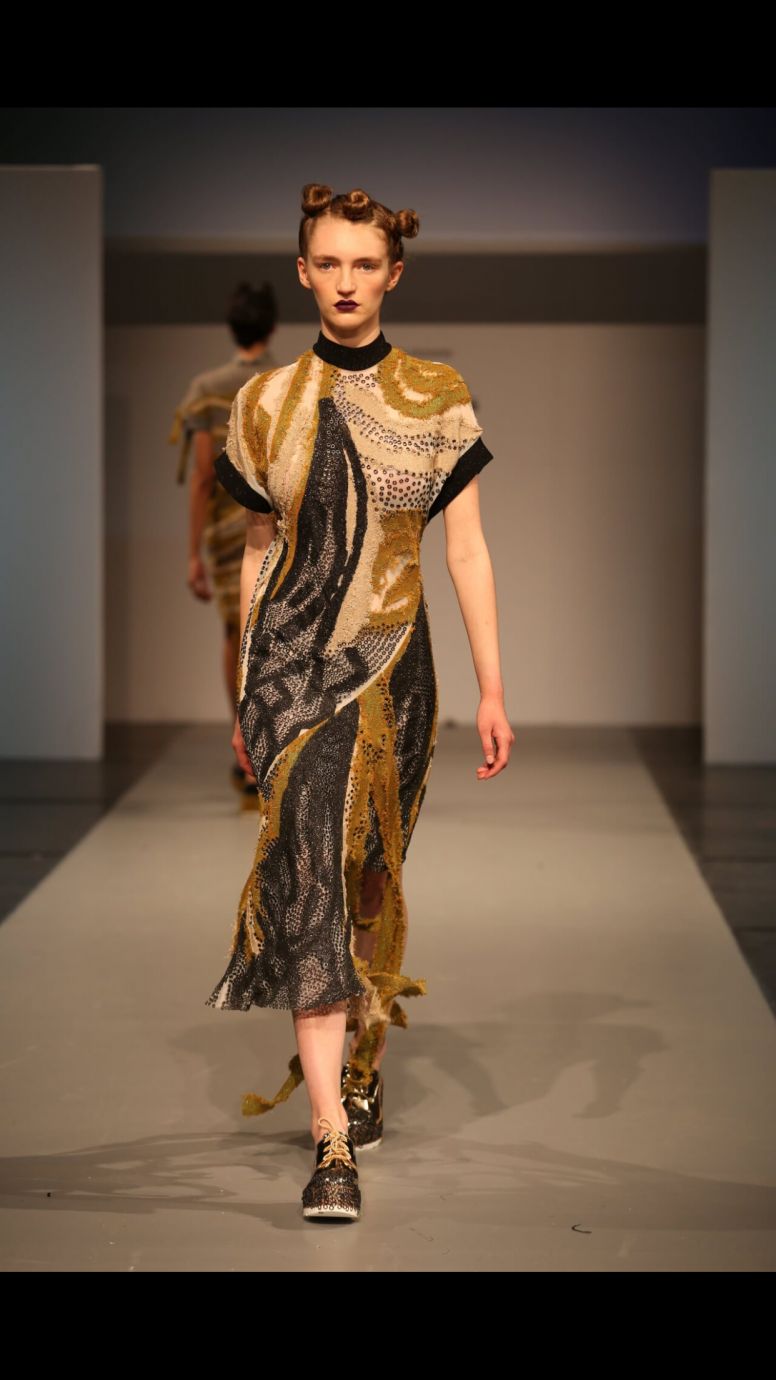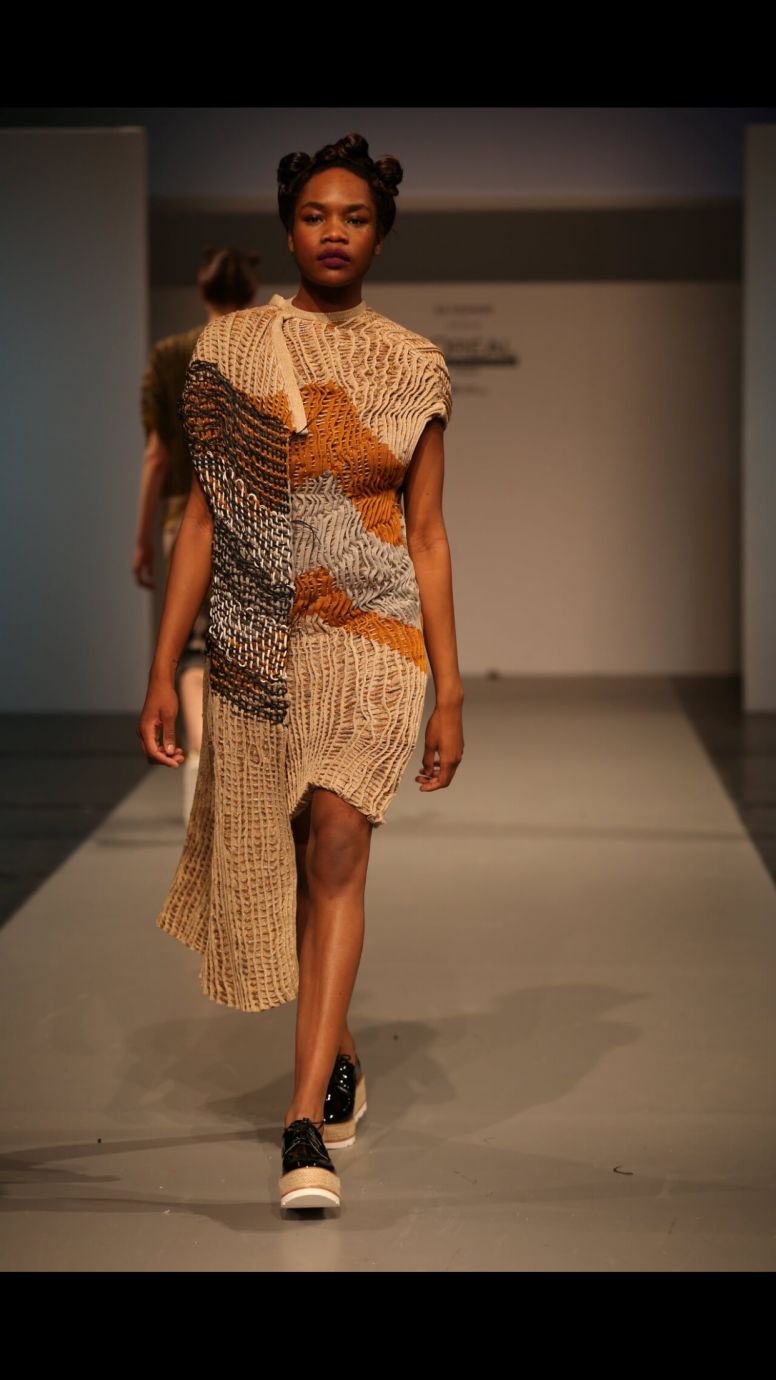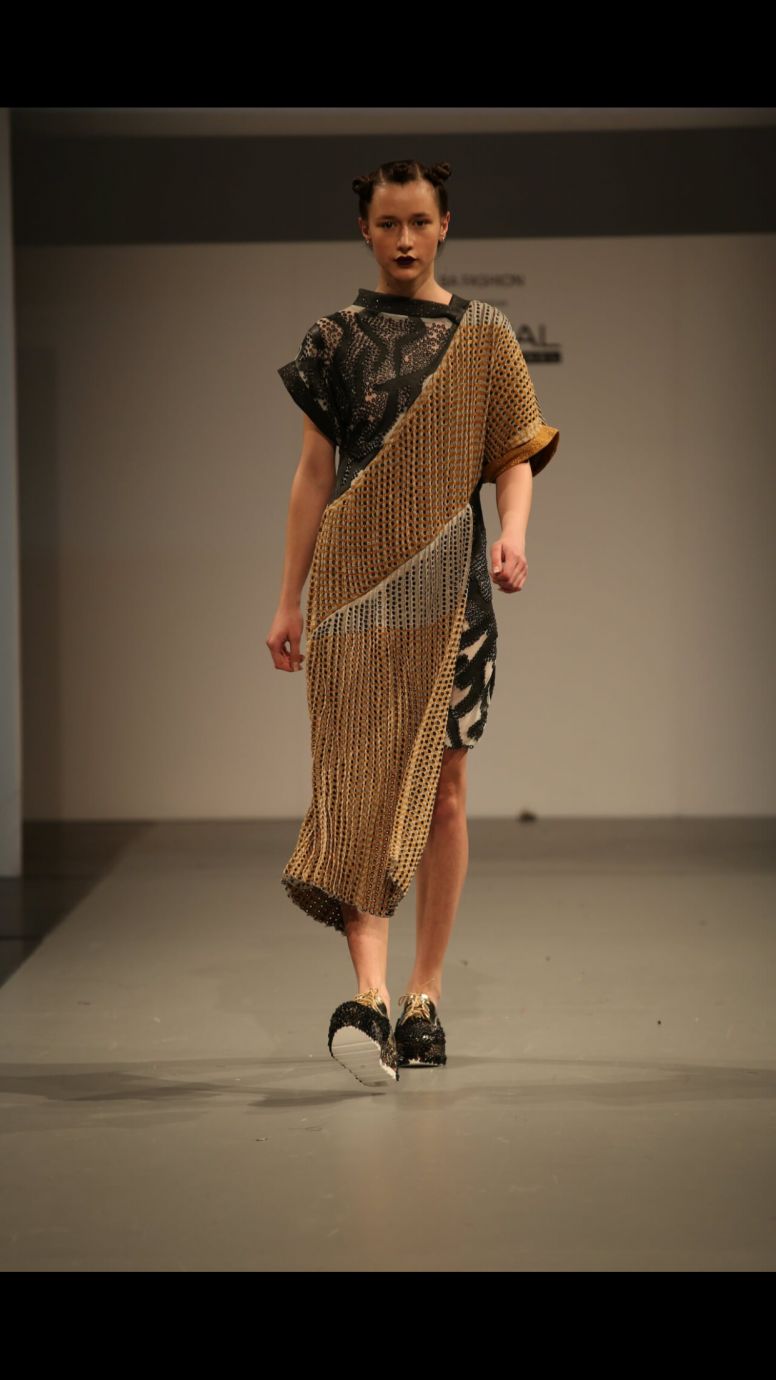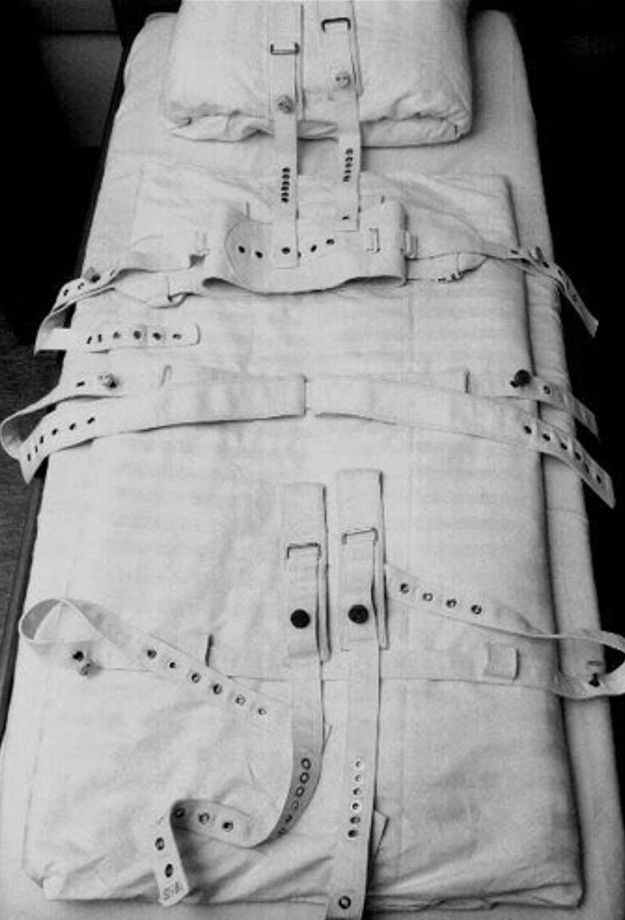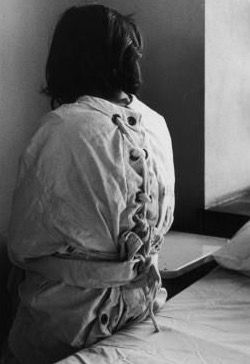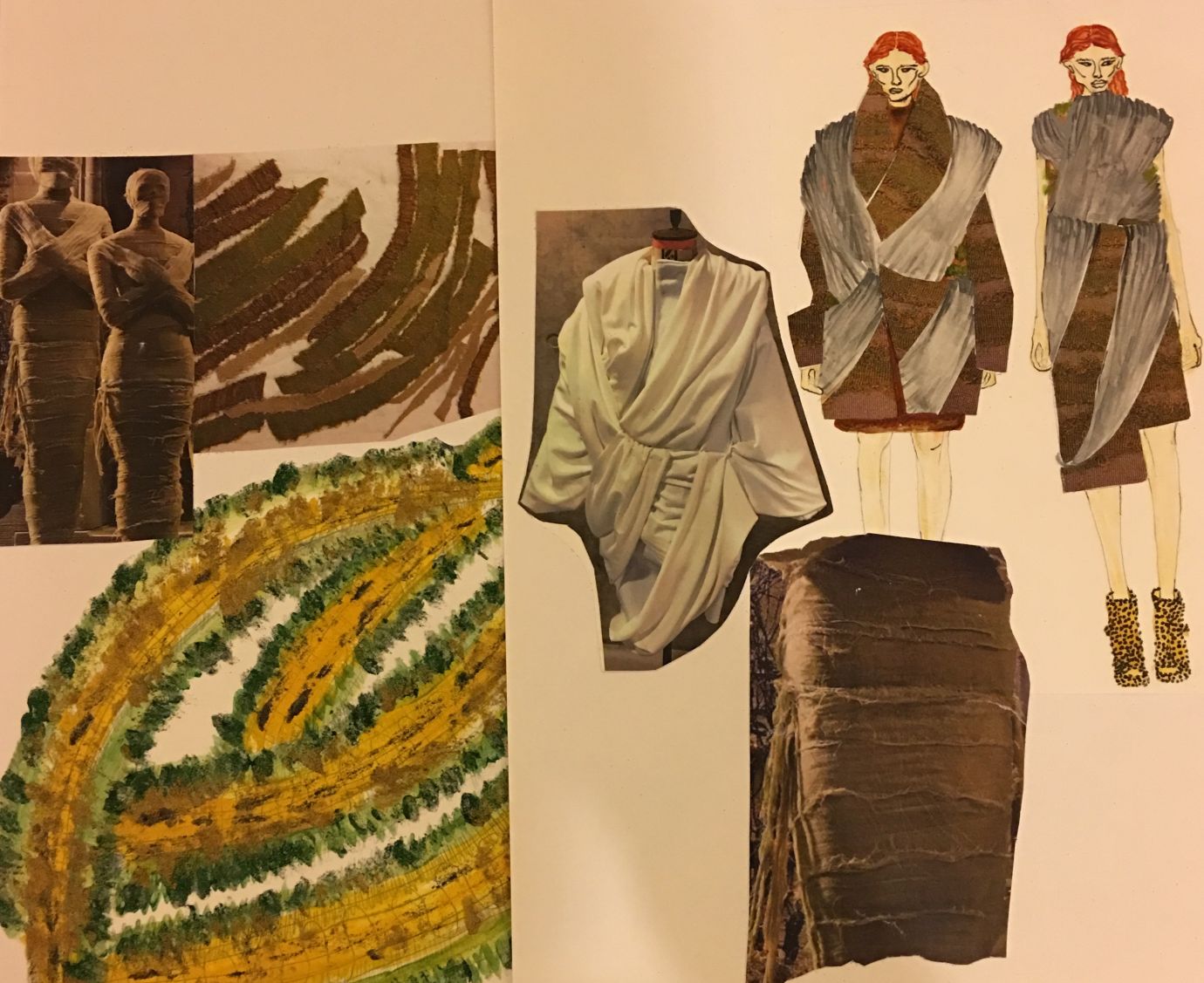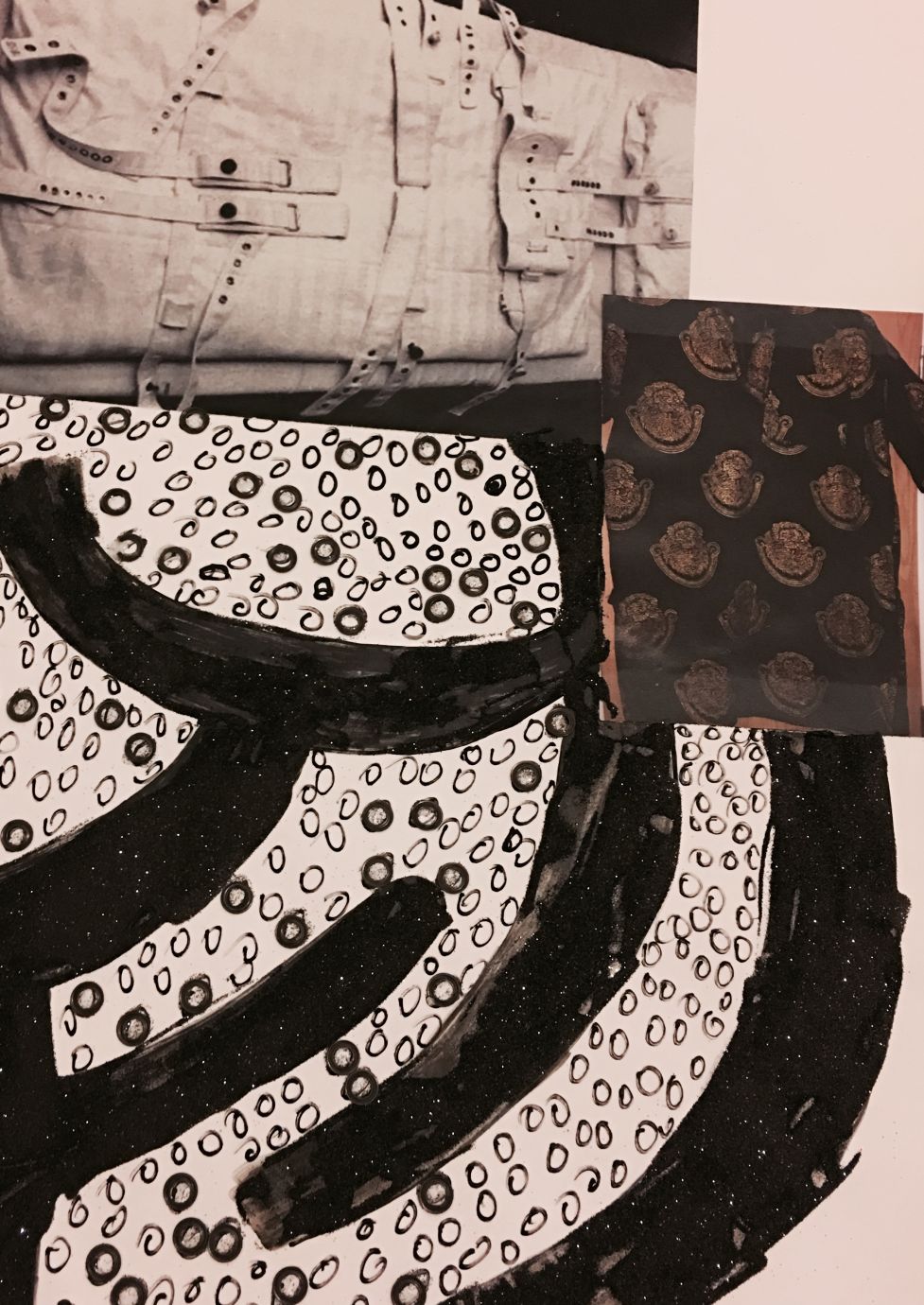This relevant issue is often neglected or simplified, not only in the realm of art and design but in society as a whole. This is why it was important for Abigail to shed a light on something so imminent in today’s society. Basing her collection on trapped emotions, her visual inspiration came from mental institutions. Using an abundance of eyelets in both garments and shoes, she referenced belts and straps used to restrict patients, which were also seen on the beds of institutions. However, to counteract the original purpose of the eyelets and holes in the belts, she embroidered her garments to create fluidity and movement. The balance between aestheticism and mindfulness/sensitivity became key in constructing her designs.
New Waves: Abigail Ezimako
"Fashion - that's where my happiness lies."
Since the start of her collection, Abigail Ezimako knew that she wanted to make it personal. Bringing her intimate and emotional experience into the project, she felt the need to voice her fresh feelings ‒ and the situation she was in at the time ‒ through her own designs. “I spent time researching how to express myself visually, then I started looking at mental health. I wasn’t sure what to do, it was almost as if I was stiff or as if I was going mental somehow.”
The strips that are found in some of the dresses reference the mummification process, which was prominent in Ancient Egypt. “It represented how I felt at the time, my body was there but my mind wasn’t. I felt like my body was preserved and still fresh but my mind was somewhere else and my inside was empty.” The reason for this feeling of disconnect, was that within a very short span of time, Abigail went through an extremely turbulent and draining experience, from weddings and births to the death of a family member. Even during her transit between places, she was perplexed about how she had to act in each situation.
Thus, her garments became an outlet and a platform for her emotions. Growing up in Nigeria, her heritage became integral to her design references. Looking back at what her father used to wear, she focused on one of the traditional wears with a lion’s head embroidered and printed all over, which indicated his chief status. By working the colours and graphics of this particular garment into her own, she was able to portray a sense of connection to her past.
Another important aspect that she brought into her design was transparency. Thinking back to when she first saw her nephew’s ultrasound, Abigail experimented with ways to visualise the translucency of this image and later achieved this by referencing a traditional type of wrap lace from Nigeria. Using liquid latex rather than print, she wanted her garments to have an experimental and destructive feel, which she believed was more appropriate in portraying how she felt during the process of designing her collection. Choosing to use a technique that she was not familiar with helped her to see her designs from a fresh perspective, as she took on the natural imperfections that arose during the process.
In a way, Abigail created the collection to process the complexities of her fresh emotions. The cultural and personal references that are prominent in her designs now, did not appear until this final collection. “It was about taking all of the emotions, which then were fresh, and putting them into something physical. It became a reminder for me to release the burdens I was carrying through and into my collection.”

